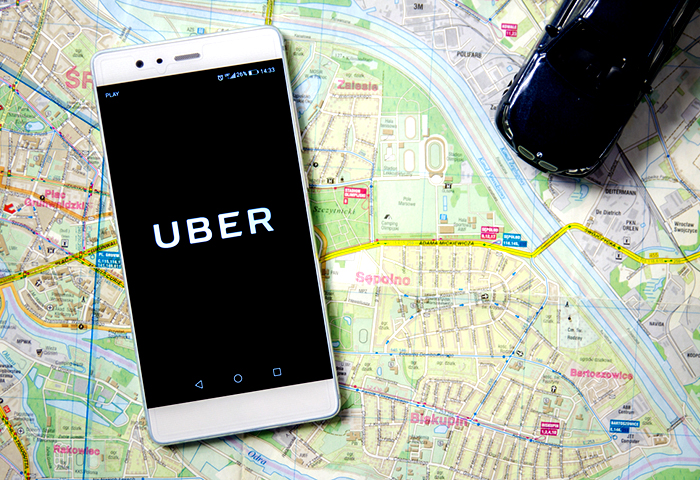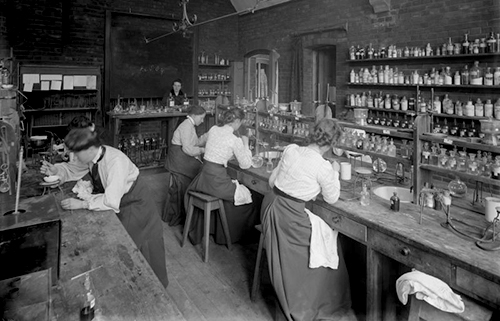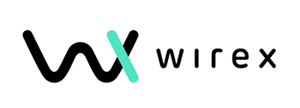What Uber Cash Teaches Innovators
- Transfer

By the time innovators first thought about using the power of ecosystems to transform the commercial sphere, scientists have been researching communications in various systems under microscopes in their laboratories for centuries.
Biologists wanted to figure out how to protect the ecosystem of the human body from the devastating effects of disease and give people a long healthy life.
Environmentalists have studied the relationship between living things and the environment, seeking to improve the health of the planet.
Marinologists, in turn, drew attention to the ecology of the Earth and its impact on oceanic ecosystems that exist to a depth of several miles.

Source

source
So innovators want to understand how their innovations can improve and strengthen ecosystems in the field of payments, and in addition how to avoid collapse and not lose ambitions.
This analogy would be relevant to learn from the experience of such an innovative payment and commerce ecosystem as Uber Cash.
Ecosystem under a different name
No matter how diverse the aspirations of scientists and innovators may be, their success often depends on solving a complex and seemingly insurmountable problem — finding a balance that will preserve the health of an ecosystem.
To create and maintain this equilibrium, an approach that scientists have long been to have is needed. It all comes down to managing the fragile interdependence between the four elements, the presence of which is inherent in all systems.
Any ecosystem needs sources of energy that provide producers with fuel for the production of things that consumers need . Without a source of energy, the ecosystem dies. Also in every ecosystem there is an unpredictable factor - decomposers . These dark horses shift their balance in one direction or another, doing their work quietly and imperceptibly. Sometimes they help strengthen the health of an ecosystem and maintain its balance. Sometimes they unexpectedly attack, having accumulated enough strength to overcome the resistance and energy of the system.
In the sphere of payments and commerce, the word “ecosystem” is not just a buzzword.
Replace producers with buyers or suppliers. Consumer - on end users. Reducer - on innovators, well known or beginners.
And fuel sources are the most unique feature of the ecosystem that supports the interest of producers and consumers. It is also needed to repel the attacks of innovators or the adoption of their innovations.
Therefore, the source of fuel is the main character and the secret weapon of any ecosystem.
Unsung Hero
The history of Uber and the large-scale upheaval that it has arranged in the taxi industry that has existed for more than a century has already been documented. But the nuances of this revolution are not detailed enough.
Uber changed the balance of power in the taxi ecosystem, giving consumers a simpler and more accessible service. First, the company attracted to cooperation the unoccupied owners of black cars, and then the owners of any new cars.
Uber has skillfully taken advantage of such favorable factors as the popularity of smartphones, app stores, advanced technologies like GPS and proven Google mapping software. The company has mixed the best online technology with offline taxi experience, adding certainty and reliability.
But the source of fuel that contributed to the take-off of Uber were not smartphones at all (although they helped), but payment cards and payment networks that support them. The highlight is how skillfully Uber used their combination to effectively launch its own platform.
The consumer opened the application, requested the car and directly in the application received a message from the driver that he would drive in three minutes. While the car was on the way, the future passenger tracked its location and could contact the driver if necessary. This scheme is significantly better than the spontaneous attempts to "catch" a taxi on the street.
But the central element of the new taxi concept was the ability to simply get out of the car, without being distracted by the thought of money. “Uber Experience” is an opportunity to link a bank card to the application in order to automatically pay for trips and give tips when leaving the car.
The magic of Uber allowed consumers not to think and not to choose between cash and a card at the end of the trip. Such “invisible payments” became possible, since practically everyone in wallet has cards that need only to be registered in the application.
Without this innovation, the service would remain just a little more predictable version of the traditional taxi, with an updated fleet and no unpleasant smell in the cabin. And he would not have reached the heights on which he is today.
The Uber Experience helped launch the platform in a number of major cities and led users to become accustomed to the simplicity the company offers. In July 2018, Uber announced it had reached 10 billion completed trips. The average weekly cost to users for server services was $ 50. Some residents of large cities, such as Boston, New York and San Francisco, spend even more.
But this is only one side of the Uber ecosystem.
When the fleet turns into fuel
The service introduced the word for the new type of transport services in the lexicon - “ridesharing”. And also began to call their drivers workers gig economy.
Uber platform drivers used their own cars, sharing the trip with passengers who are willing to pay more than the basic taxi fare for travel from point A to point B. The company paid for the services of drivers as independent wage workers. And they built a very flexible schedule and organized their own business based on the Uber platform.
The Uber ecosystem grew and flourished: demand was on par with supply. For nine years, the company has increased its solid fleet of cars and has a comparable wide demand for its services in 814 cities of the world .
The fleet allowed the company to expand its range of services.
In 2014, the company introduced the Uber Eats application, an online restaurant delivery aggregator that allows registered Uber customers to order food from local restaurants and cafes.
Uber Eats also achieved success, despite the fact that it was launched a decade after Grubhub, three years after Postmates and a year after DoorDash. Uber entered the arena with a clear advantage. Behind him was an ecosystem with a huge base of users, already tied credit cards to the service, and a fleet of vehicles, whose drivers earn money using Uber and have all the necessary skills to deliver orders. Restaurants also played a key role in the process.
As a result, many today call Uber Eats the company's secret weapon.
Since its launch, Uber Eats has spread to 280 cities. According to Dary Khosroshakhi, the company's general director, last year the business grew by 200%, and in 2018, while maintaining the current pace, the total volume of orders will reach $ 6 billion. Grubhub has a similar indicator of $ 3.7 billion.
The average amount of annual orders of Uber Eats users is $ 220 - significantly more than that of competitors like Grubhub. And these users retain their loyalty to the service. More than half of their food delivery expenses (53.6%) fall on Uber Eats.
Closing the circle
In 2016, Uber, in conjunction with Visa, launched the Local Offers program, and in 2017, Barclays began to issue a branded Uber Visa card.
As part of Local Offers, users register their Visa credit cards and some other debit cards in the Uber application and receive points for cashless payments for goods and services at partner stores.
Barclays commission-free cards provide 4% cashback for restaurant bills, including Uber Eats orders, as well as 3% cashback when paying for travel.
Recently launched Uber Cash cardThe company is now positioning itself as a single place to store all accumulated bonuses, reward points and gift cards, which can be used in the Uber ecosystem. Card holders receive additional rewards. The company encourages customers to get Uber Cash: for every $ 95 dollars added by the user to the card, he gets $ 5 from the company on top.
Uber representatives explain that Uber Cash simplifies the use of credit cards, bonuses and rewards available today to users of the ecosystem. The company hopes that a tool that can bring simplicity and clarity will become an additional incentive for customers and create a strong network effect by simplifying the procedures for paying for services and accumulating rewards.
In addition to streamlining customer cards and bonuses, Uber also receives a pleasant benefit in the form of increased cash flow to the cashier, which strengthens the company's financial position.
And all thanks to payments and payment cards.
Fuel for ecosystem pumping
Fuel supporting an ecosystem is, as a rule, something obvious, hidden in public view, but essential for launching the ecosystem, its growth and maintaining its balance. Fuel creates new values within existing ecosystems. Or it becomes an instrument for the destruction of such values.
Uber hopes that Uber Cash is a new energy source that will maintain a balance in the company's ecosystem.
Competitors are not asleep and also strive to bite off their piece of cake. For example, the Lyft service is actively looking for ways to consolidate and expand its position in the ridesharing segment. We should not forget about the regulators in some cities working overtime, in order to complicate operations for such companies.
Applications for sharing scooters and bicycles multiply in hipster cities like rabbits, setting meager tariffs and rapidly reaching multi-billion indicators. According to the CEO of Uber, the purchase of JUMP bicycle service was designed to mitigate the impact of competition, although it cost the company a lower margin on platform services. Rumor has it that Uber is close to launching a scooter sharing service. The application is ready for such an extension, offering a simple selection of ridesharing options.
In the meantime, Grubhub , DoorDash and Postmates do not sit back and do not wait for Uber to swallow their restaurant delivery businesses. All three companies have chosen different strategies aimed at strengthening their ecosystems and destabilizing the ecosystem of the popular upstart.
It seems that Uber Cash is an attempt by Uber to double the stakes on the source of fuel that once contributed to the launch of the service. The company again uses payments to create a new “Uber experience” that will preserve the health of the ecosystem and protect it from threats. Their payment service offers customers even greater value whenever they pay for services that they consume on a daily basis using the application.
And soon, in addition to ridesharing and Uber Eats, this ecosystem will include alternative ways to move, such as renting bicycles and scooters.
And in the future, perhaps, Uber Cash will grow into a separate mobile wallet that allows you to pay for goods and services in the new format. For example, pre-order in the partner restaurants of Uber Eats with the ability to pick it up at a convenient time.
Uber is not the first company to use payments as fuel to launch a powerful and attractive ecosystem. Two decades ago, PayPal and Amazon also used the easy pay option to create large and growing commercial ecosystems.
But payments alone are not enough. After all, somewhere in a prominent place, there is always some experience that can be applied to payments and build a healthy ecosystem that is attractive to producers and consumers and is resistant to the actions of malicious agents.
The lesson of Uber, PayPal and Amazon is that payments are only a means to achieve this growth.

